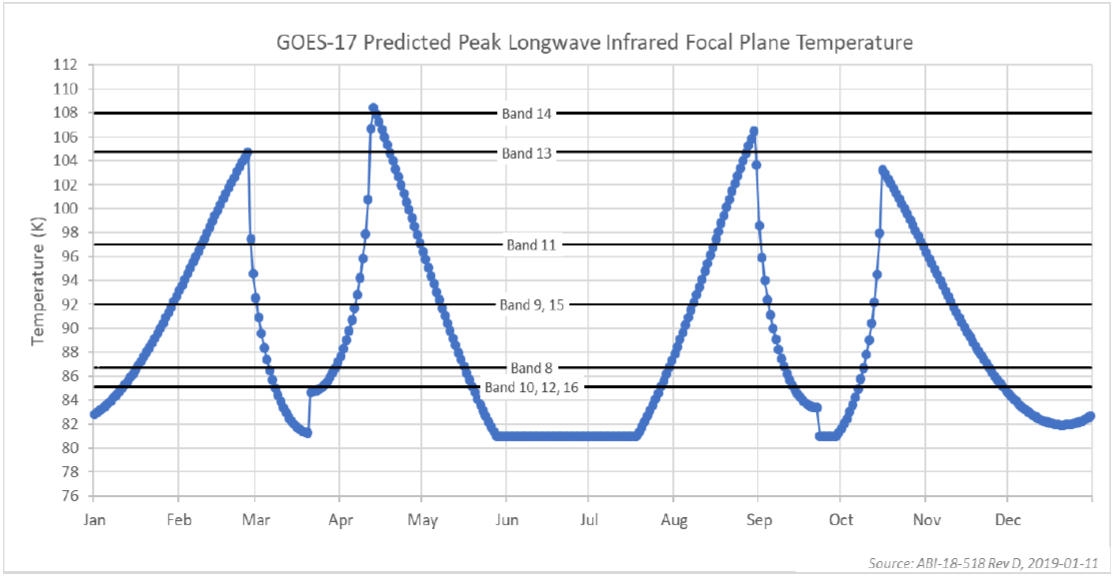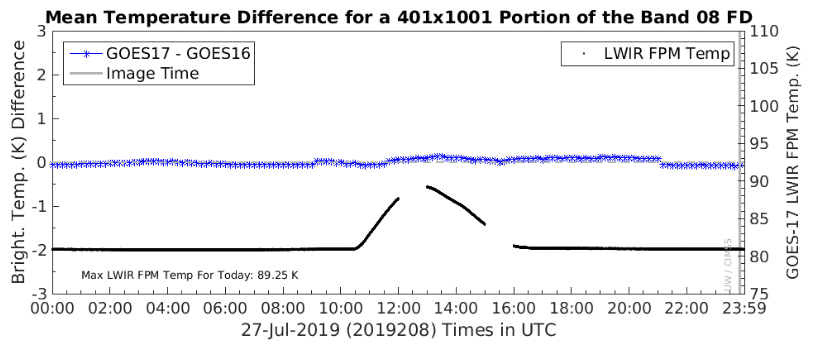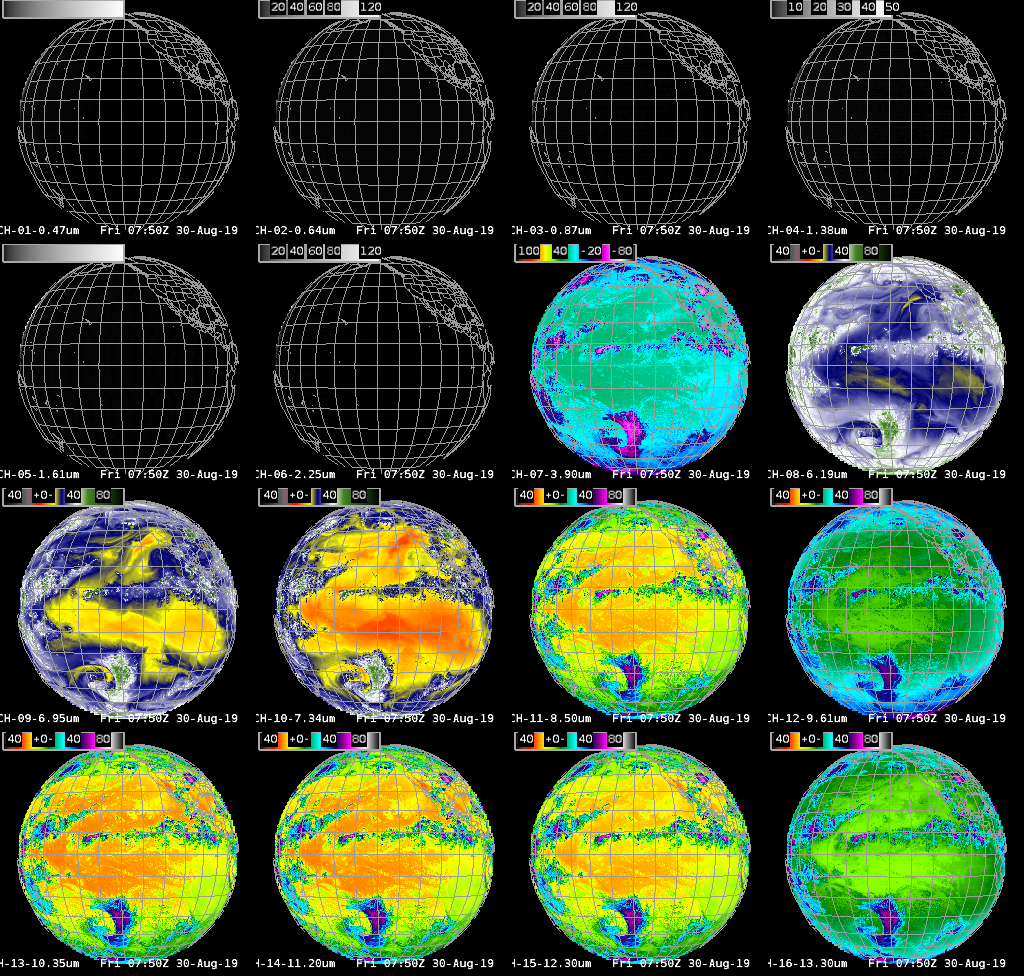GOES-17 Loop Heat Pipe data outages reach seasonal peak
The periodic deleterious heating of the GOES-17 Advanced Baseline Imager (ABI) will reach a peak on 30 or 31 August 2019. The effects (in ABI bands 8-16) of the heating are manifest because the Loop Heat Pipe on the GOES-17 satellite does not operate at peak efficiency and cannot dissipate the heat that accumulates as the sun shines directly on the ABI instrument at night. The animation above shows full-disk imagery for all 16 bands on GOES-17 from 0750 UTC through 1640 UTC. Band 12 (9.6 µm) imagery is affected the most by the heating: data are unuseable from 1040 UTC to 1630 UTC; Band 10, the low-level water vapor channel at 7.3 µm is unuseable from 1050 UTC to 1620 UTC. Other infrared bands show different outages. Only Band 14 (11.2 µm) is mostly unaffected, although some striping is apparent between 1210 and 1330 UTC.
Other well-known artifacts are present in the animation. For example, a keep-out zone (or solar avoidance zone, sometimes also called the “Cookie Monster Effect”) is apparent moving across the northern 1/5th of the Globe; this image from 0910 UTC shows the feature. Satellite-Earth-Geometry means the Sun is near the limb of the Earth and the satellite sensors do not scan near the Sun. Stray Light is also present in the imagery. This shows up most distinctly in visible/near-infrared imagery, but its effects are also present in the 3.9 µm imagery.
The figure below, from this blog post, shows predicted maximum focal plane temperatures for each day. In early September, a rapid cool-down in the peak temperature occurs as the GOES-17 satellite starts entering the shadow of the Earth during night times when it would otherwise be illuminated by the Sun.

Predicted warmest Focal Plane Temperature as a function of Year. Also included: the threshold temperatures when the ABI Detection is affected by the warmer Focal Plane. The step in values near both Equinoxes occurs when a Yaw Flip is performed on the satellite (Click to enlarge)
This website shows comparisons between GOES-16 and GOES-17 for different bands, and includes observations of the focal plane temperature. The animation below shows the steady increase in the maximum focal plane module (FPM) temperature in August and that warmth’s impact on the Band 12 observations: there are longer and longer periods of time with no GOES-17 Band 12 data as you move through August (indicated by difference values that are off the chart).

Mean Band 12 (9.6 µm) brightness temperature difference (between GOES-16 and GOES-17, plotted in blue) over a region on 27 July, 2 August, 10 August, 16 August, 22 August and 29 August 2019. The black line shows the Focal Plane Temperature (Click to enlarge)
A similar chart for Band 8 (6.19 µm) is shown below. Band 8 is not affected so severely by the Loop Heat Pipe. (Click here here for a similar chart for Band 14 (11.2 µm)).

Mean Band 8 (6.19 µm) brightness temperature difference (between GOES-16 and GOES-17, plotted in blue) over a region on 27 July, 2 August, 10 August, 16 August, 22 August and 29 August 2019. The black line shows the Focal Plane Temperature (Click to animate)
The intra-band differences on the effects of the excess heat are shown here for values on 29 August for Bands 8 (6.19 µm), 12 (9.6 µm) and 14 (11.2 µm).


